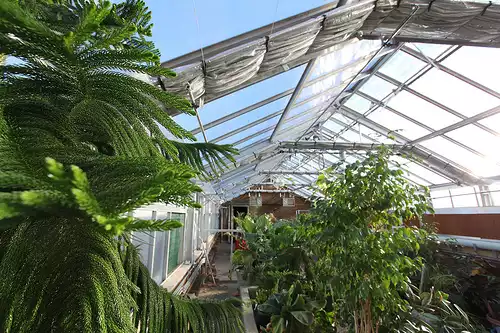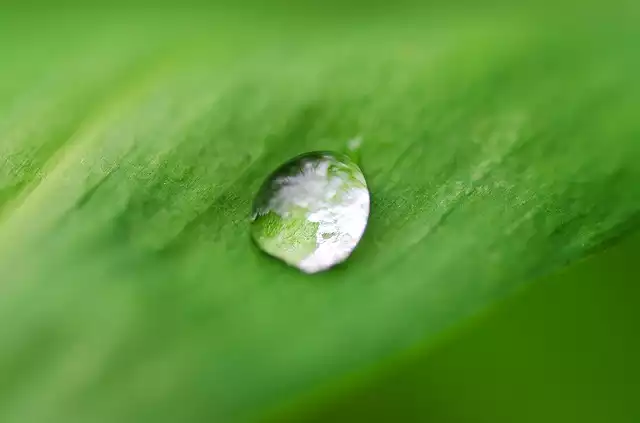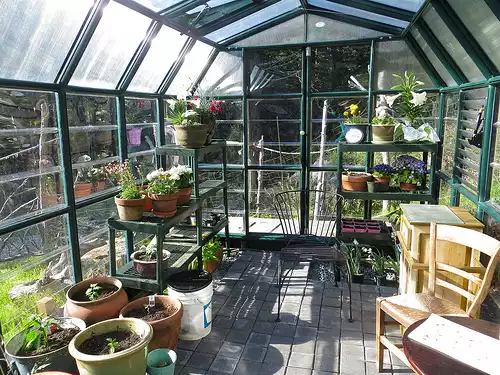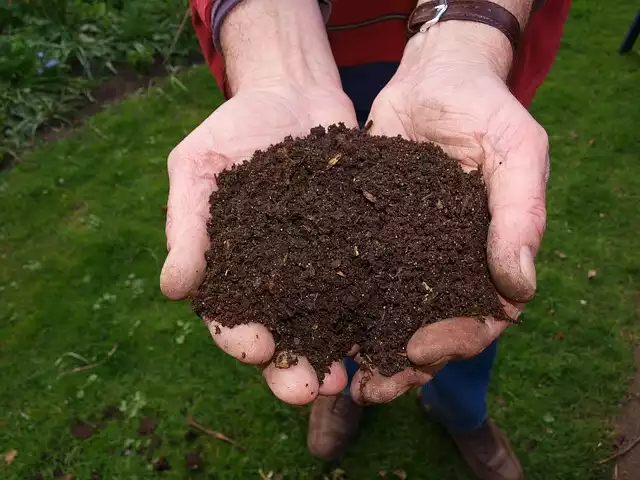Greenhouse Accessory Guide
While it’s true that you can get started growing right out of the box with your new greenhouse, 99% of greenhouse growers use some simple tools to help monitor and maintain ideal growing conditions in their greenhouses.
Whether it is keeping things cool during hot summer months or making sure that overnight lows don’t drop below 45 degrees in the chill of winter, there are a variety of greenhouse accessories that will help maximize your greenhouse productivity.
In this article, we discuss some of the most essential and popular accessories that we recommend to our customers.
To ensure optimal growth, greenhouse growers often rely on a range of essential accessories.
These tools help regulate temperature, humidity, and other factors crucial for plant health.
Among the most popular accessories are automatic vent openers, which adjust ventilation based on temperature fluctuations.
Additionally, shade cloth is commonly used to protect plants from excessive sunlight and prevent overheating.
Another widely used accessory is a digital thermometer, allowing growers to monitor temperature levels accurately.
Finally, irrigation systems with timers are indispensable for maintaining proper watering schedules, ensuring plants receive adequate moisture.
Table of Contents Greenhouse Accessory Guide
Thermometers
One of the most important aspects of greenhouse growing is temperature control.
Maintaining the proper temperature is vital to ensuring optimal plant health and growth.
So it stands to reason that one of the most important accessories for your greenhouse is a thermometer.
We recommend a Min/Max thermometer so that you can track how hot your greenhouse gets during the day and how cold it gets at night.
You’ll want to keep a log of these temperatures as well as the outside weather conditions in order to get a sense for how your greenhouse performs under different weather conditions.
The latest innovation we’ve seen in monitoring greenhouse temperatures is the Weather Station which lets you monitor conditions inside and outside your greenhouse from the comfort of your home! This gives you all of the data you need to monitor how your greenhouse performs year round, allowing you to plan for and anticipate what you’ll need to optimize greenhouse growing conditions.
Vent Openers
The most popular accessories people choose for their greenhouses are automatic vent openers .
These inexpensive devices help keep greenhouses cool by automatically opening as the greenhouse warms during the day.
Once the vents are open, ventilation also is improved as the hot air rises up out of the vents, drawing cooler air in from the bottom of the greenhouse and maintaining a good air circulation.
The Weather Station is an innovative solution for monitoring greenhouse temperatures, providing real-time data on both the interior and exterior conditions.
With this advanced technology, greenhouse owners can conveniently track and analyze the performance of their greenhouse throughout the year.
By having access to comprehensive data, greenhouse operators can effectively plan and make necessary adjustments to optimize growing conditions and achieve desired outcomes.
One of the most sought-after accessories for greenhouses is the automatic vent opener.
This cost-effective device plays a crucial role in maintaining optimal greenhouse temperatures.
By automatically opening as the greenhouse warms up during the day, the vent opener helps to regulate and cool down the interior environment.
Additionally, the opened vents facilitate improved ventilation as the hot air rises and draws in cooler air from the bottom, ensuring a well-circulated and conducive atmosphere for plant growth.
Circulation fans
Keeping the air moving in your greenhouse is vital for the health of your plants.
If the air around your plants isn’t moving, your plants are more susceptible to disease from fungus.
Additionally, if the air around your plants is still, they can deplete the amount of CO2 in their immediate vicinity, slowing their growth.
When airflow in your greenhouse from ventilation is minimal, or if you have a larger greenhouse, you will want to use Horizontal Air Flow (HAF) fans to make sure that your plants are getting fresh air circulating around them.
The use of Horizontal Air Flow (HAF) fans in larger greenhouses ensures optimal airflow and circulation for healthy plant growth.
These fans help prevent stagnant air, which can lead to the spread of disease-causing fungi and hinder plant development due to reduced CO2 levels.
With the consistent movement of air provided by HAF fans, plants are able to receive fresh air and maintain an environment conducive to their overall well-being.
Shade Cloth
Another key element for regulating the temperature of any greenhouse is a shade cloth .
Even in moderate temperatures, a greenhouse that gets full sun can still reach high temperatures that can damage your plants.
Shade cloths will not only block some of this heat but they will also help to diffuse the light entering your greenhouse.
Typically, shade cloths are made from a mesh weave of plastic.
However, a popular recent innovation, called Aluminet , incorporates metal to increase the reflectivity of the shade cloth, thereby reducing solar heating even more.
Shade cloths are an essential component in maintaining optimal greenhouse temperatures and protecting plants from excessive heat.
They effectively block the sun’s rays and diffuse light, preventing damage to plants caused by high temperatures.
Traditional shade cloths are made from plastic mesh, but Aluminet, a recent innovation, incorporates metal to enhance reflectivity and further reduce solar heating.
Using shade cloths in greenhouses helps create a favorable environment for plant growth and prevents heat stress.
Misting and Watering
Another option to help keep your greenhouse cool is to use a misting system .
This can be run either on a timer or on a thermostatically controlled outlet.
Greenhouses have become an essential tool for modern-day gardening, providing a controlled environment for plants to thrive in any season.
However, maintaining the ideal conditions within a greenhouse can be challenging.
One crucial aspect of greenhouse management is ensuring the correct amount of moisture for the plants.
This is where misting and watering come into play.
Misting is the process of spraying a fine mist of water over plants, while watering involves directly applying water to the soil.
Both these methods are essential for the growth and development of plants in a greenhouse.
In this article, we will delve into the importance of misting and watering in a greenhouse, the different techniques and equipment used, and best practices for optimal plant growth.
Whether you are a novice gardener or an experienced horticulturist, understanding the basics of misting and watering in a greenhouse is crucial for maintaining healthy and thriving plants.
So, join us as we explore the world of greenhouse management and learn how to provide the perfect amount of moisture for your plants.
Efficient methods for greenhouse irrigation
One effective method for greenhouse irrigation is the use of drip irrigation systems.
These systems deliver water directly to the root zone of plants through a network of tubes with emitters placed at precise intervals.
This targeted approach minimizes water waste by ensuring that water is only provided where it is needed, reducing the risk of evaporation and surface runoff.
Additionally, drip irrigation systems allow for precise control over water delivery, enabling growers to adjust water amounts based on specific crop needs.
This not only promotes water efficiency but also helps prevent over-watering, which can lead to root diseases and nutrient leaching.
By utilizing drip irrigation, greenhouse operators can optimize water usage and promote healthy plant growth while minimizing water waste.
Why misting can benefit plants
One additional method that can greatly benefit plants in a greenhouse is misting.
Misting involves the release of fine droplets of water into the air surrounding the plants.
This practice can be particularly beneficial for certain types of plants that thrive in high humidity environments.
By increasing the moisture levels in the air, misting helps to create a microclimate that mimics the plants’ natural habitat, promoting optimal growth and development.
Furthermore, misting can aid in the prevention of plant stress caused by dry air, especially during periods of low humidity.
The fine mist droplets also have a cooling effect on the plants, reducing the risk of overheating and heat stress.
Overall, incorporating misting as part of the watering and irrigation strategy in a greenhouse can improve plant health and productivity, ensuring optimal conditions for growth.
Balancing watering and humidity levels
Maintaining a proper balance between watering and humidity levels is crucial for the successful cultivation of plants in a greenhouse.
It is important to strike the right balance to avoid both overwatering and under-watering, as well as to prevent excessive moisture or dryness in the air.
Overwatering can lead to root rot, fungal diseases, and stunted growth, while under-watering can cause wilting and dehydration.
Additionally, improper humidity levels can affect plant transpiration and nutrient uptake.
Regular monitoring of moisture levels in the soil and the use of humidity sensors can help determine the appropriate watering frequency and duration.
Adjusting the greenhouse ventilation system, such as using fans or vents, can regulate humidity levels and prevent excessive moisture buildup.
Taking into account the specific requirements of different plant species and adjusting watering and humidity levels accordingly will contribute to healthier and more robust plants in the greenhouse environment.
In conclusion, misting and watering are crucial components of maintaining a healthy and thriving greenhouse environment.
By understanding the specific needs of different plants, utilizing the right tools and techniques, and regularly monitoring and adjusting for optimal moisture levels, greenhouse owners can ensure the success of their plants.
As with any aspect of greenhouse care, consistency and attention to detail are key.
With proper misting and watering practices, a flourishing greenhouse is within reach.
Heaters
During the winter it is important that you try to maintain overnight temperatures above at least 45 degrees Fahrenheit.
Some tropical plants may require even higher temperatures.
There are a variety of ways to help maintain high overnight temperatures in your greenhouse, however most growers in colder climates will find the need to use a heater at some point during the winter.
To calculate the heating requirements for your greenhouse, it will be necessary to factor in the size of the house, the insulation factor of the glazing and the difference in temperature that is needed.
We’ve made it easy for you by providing this calculator:
There are three major types of heaters.
Electric heaters such as Juliana Flexifurnace Heater provide safe reliable heat for smaller houses or when a greenhouse in normally moderate climate experiences a prolonged cold snap.
One tip is to use two electric heaters with one set slightly lower than the other so that it only turns on when extra heating is required.
If you need more heat, it may be necessary to install a propane or natural gas heater.
These heaters are also normally safe for you and your plants.
Look for heaters that will automatically shut off when their Oxygen Deprivation Sensors (ODS) detect.
Finally, although all of the heaters we sell are very safe and reliable, a prudent greenhouse grower will have a general purpose fire extinguisher available.
These will be denoted with the term ABC.
Also, remember to periodically check them – Better safe than sorry!
Ground Cover
Ground cover is an essential to lay underneath your greenhouse.
This specially designed plastic fabric permits water to drain out of your greenhouse while preventing weeds or pests from coming in.
These controlled environments provide a protected space to grow a variety of plants, including fruits, vegetables, and flowers.
However, in order to ensure maximum productivity and health of the plants, proper cultivation techniques must be employed.
One crucial aspect of greenhouse cultivation is the use of ground cover.
Ground cover refers to any material that is placed on the floor of the greenhouse to cover the soil.
This can range from organic mulches, like straw or compost, to synthetic materials, such as plastic sheeting or landscape fabric.
The benefits of using ground cover in a greenhouse are numerous, including improved soil health, weed control, and water conservation.
In this article, we will delve into the importance of ground cover in a greenhouse, explore different types of ground cover, and provide tips for choosing and implementing the right one for your specific needs.
Whether you are a seasoned greenhouse owner or a novice gardener, understanding the role of ground cover in a greenhouse is crucial for achieving a successful and fruitful growing season.
Maximize Greenhouse Space with Ground Cover
To optimize the utilization of your greenhouse space, incorporating ground cover is a crucial strategy.
By implementing this technique, you can effectively maximize the available area and create a more productive growing environment.
Ground cover acts as a protective layer, preventing weed growth, and reducing the need for excessive manual labor and weed control measures.
Additionally, it serves as a barrier between the soil and the plants, promoting better moisture retention and preventing soil erosion.
This not only enhances the overall health of the plants but also conserves water usage.
Moreover, ground cover can act as an insulator, regulating the temperature within the greenhouse, thereby reducing energy costs and creating a more stable and favorable climate for plant growth.
Overall, integrating ground cover into your greenhouse management practices is an effective means to optimize space and improve productivity while minimizing maintenance efforts and resource consumption.
Benefits of Using Ground Cover
Ground cover in a greenhouse offers a multitude of benefits beyond optimizing space utilization.
One of the primary advantages is the significant reduction in weed growth, which eliminates the need for extensive manual labor and expensive weed control measures.
By preventing weeds from competing with the desired plants for nutrients, sunlight, and water, ground cover ensures that resources are efficiently utilized, promoting healthier and more robust plant growth.
Additionally, the protective layer provided by ground cover acts as a barrier, helping to retain moisture in the soil and prevent erosion, thereby conserving water and promoting sustainable irrigation practices.
Moreover, this protective layer acts as an insulator, regulating the temperature within the greenhouse, which can lead to energy cost savings and create a more stable and conducive climate for optimal plant development.
These benefits make ground cover an essential component in greenhouse management, enhancing productivity, reducing maintenance efforts, and improving overall plant health.
Top Ground Cover Options for Greenhouses
When considering ground cover options for greenhouses, it is important to select materials that provide effective weed control, retain moisture, and promote optimal plant growth.
One option is the use of organic mulches, such as straw or wood chips, which not only suppress weeds but also enhance soil fertility as they break down over time.
Another popular choice is woven landscape fabric, which allows for water and air permeability while preventing weed growth.
Additionally, plastic ground cover can be utilized, providing excellent weed control and moisture retention.
However, it is crucial to select a type that is UV-stabilized to withstand the intense sunlight within the greenhouse environment.
Ultimately, choosing the right ground cover option depends on the specific needs of the greenhouse, such as the type of crops grown, desired water management, and maintenance preferences.
By carefully selecting and implementing ground cover, greenhouse operators can optimize plant health, reduce maintenance efforts, and create an efficient and productive growing environment.
In conclusion, ground cover is a valuable and practical addition to any greenhouse.
With its ability to control weeds, regulate soil temperature, and improve water retention, ground cover can greatly enhance the health and productivity of your greenhouse plants.
Whether you choose organic materials or synthetic options, be sure to carefully select the right type of ground cover for your specific needs and regularly maintain it to reap the full benefits.
As a professional in the greenhouse industry, I highly recommend incorporating ground cover into your greenhouse setup for optimal results.
Shelving
Whether you build your own or buy it, you get much more satisfaction out of your greenhouse by making sure you have some convenient shelves.
They not only give you more space for keeping plants, but they can provide essential work areas while you are working with your plants.
The ideal potting shelf will be at a height where you don’t have to bend over far to work with your pots and plants.
The ideal growing shelf will have ventilated shelves to allow for water to drain and light to filter through.
Shelving is another important aspect of a greenhouse.
Whether you choose to build your own or purchase ready-made shelves, they are crucial for maximizing space and providing convenient work areas.
Having shelves not only allows for more storage for your plants but also creates ideal potting and growing areas.
An ideal potting shelf should be at a suitable height to minimize bending over while working with pots and plants.
On the other hand, a growing shelf should have ventilated shelves that facilitate water drainage and allow light to filter through efficiently.
Remember to periodically check your greenhouse to ensure everything is in order and to avoid any potential issues.
As the saying goes, it’s better to be safe than sorry!







